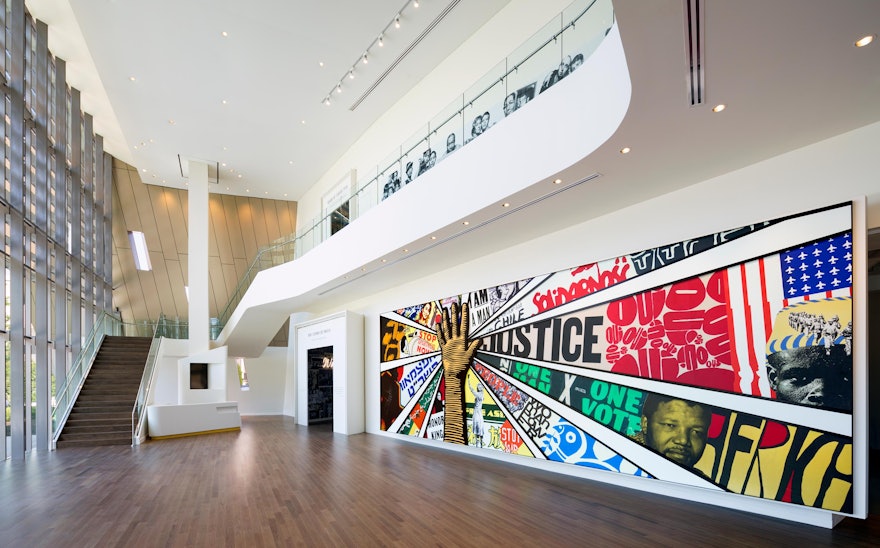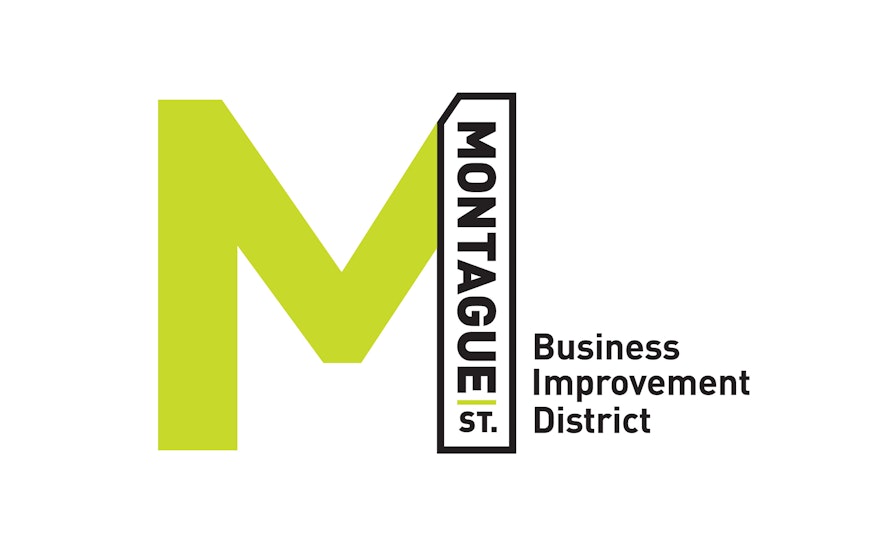The National Center for Civil and Human Rights is a museum that connects the American Civil Rights Movement with current struggles for human rights around the world. Located near Centennial Olympic Park in downtown Atlanta, the Center harnesses the city’s legacy as a birthplace of civil rights activism to encourage visitors to think about the role they can play in protecting human rights.
Pentagram has designed a large-scale mural for the museum lobby that pays homage to the graphics of rights movements and brings them together in a bold new composition centered on a raised human hand. The installation has inspired its own viral mini-movement: Visitors are showing solidarity with the mural’s message by sharing images of their own “high fives” on social media.
Pentagram was commissioned to create the mural by George C. Wolfe, the Center’s Chief Creative Officer who originally commissioned Pentagram to create our iconic identity for the Public in 1994. The $68 million, 42,000 square-foot Center was designed by Phil Freelon of The Freelon Group, working with architect of record HOK. The museum’s exhibitions by Rockwell Group consist of two separate galleries, one devoted to the American Civil Rights Movement (designed in part by Wolfe), the other looking at current global movements, as seen through the lens of the Universal Declaration of Human Rights. The museum needed an installation to activate its entrance lobby but had a limited budget. The soaring space is visible through the glass panels of the building façade, which looks out on Pemberton Place, the downtown plaza that is also home to the Georgia Aquarium and the World of Coca-Cola museum.
The mural unites the Center’s themes in a colorful collage composed of graphics from landmark human rights movements. The dynamic image centers on a raised hand demanding to be counted. Lines radiate out to embrace the words and images that helped engage people in the cause. The mural connects the various movements and highlights them as part of an evolving struggle to protect the human rights of all. The mural also acknowledges the important role that posters, placards, symbols and other graphics have played in garnering support.
To create the mural, the designers researched historic posters, selecting over 25 for the final display. The original posters were of varying age and quality, so the team digitized the pieces and used printouts to assemble the collage. The final mural measures 35 feet by 12 feet, and is dimensional, built in layers. The pieces are arranged in tracks outlined by the lines radiating from the hand.
Once the mural was in place, it became the focus of the emotional reactions people were having to the museum. Staff and visitors started recalling their own personal experiences with the movements depicted in the collage. And on their own, visitors began taking photographs of their hands raised in the shape of the one on the mural, and sharing them on social media like Twitter and Instagram. The museum has supported the response, asking visitors to tag their images with #High5forCHR (“high five for civil and human rights”) so they can be experienced with each other.
The Center was recently visited by U.S. Representative John Lewis, one of the original leaders of the Civil Rights Movement, who posed at the mural alongside Carolyn and Andrea Young, wife and daughter, respectively, of the former United Nations Ambassador Andrew Young, who helped conceive of the museum.

